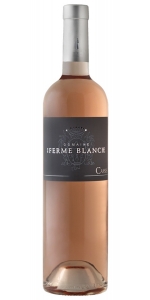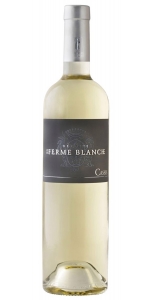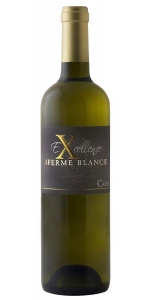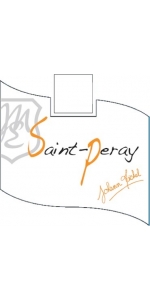Marsanne
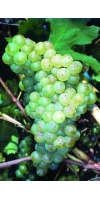
Marsanne is a white wine variety from the Rhone Valley in France. In Switzerland and Savoie, Marsanne is sometimes referred to as “Ermitage”. This is due to the ability to produce some of the most famous white wines of Hermitage. Marsanne has been adopted and grown successfully in Australia, and the United States. Marsanne is full bodied with excellent weight and structure, however it can struggle to produce good acidity in warm climates. In cooler climates, Marsanne will shine and produce complex wine worthy of age. Marsanne will have a light straw color with hints of gold and green. On the nose, Marsanne will allow for an earthy and mineral tone with characteristics of honeysuckle and melon. When aged, Marsanne becomes a rich amber color with nut and orange marmalade flavor. Marsanne has the potential to age for up to 15 years. Marsanne is often blended with more aromatic varieties such as Roussanne and Clairette in northern Rhone. When paired with Roussanne, Marsanne produces the sparkling wine, Saint-Peray. In Languedoc, Marsanne is blended Viognier and Rolle.
Ferme Blanche Cassis Blanc is made from 40% Marsanne, 20% Ugni Blanc, 20% Clairette, 10% Sauvignon Blanc and 10% Bourboulenc. .
The wine has a pale golden color and offers subtle aromas of citrus fruits, peach and apricot, and floral notes of acacia and linden. Crisp and lively on the palate, good tension and length and a refreshing finish.
Sea stews, shellfish, traditional fish and chips, octopus salad.
Ferme Blanche Cassis Blanc Excellence is made from 40% Marsanne, 20% Ugni Blanc, 20% Clairette, 10% Sauvignon Blanc and 10% Bourboulenc.
The wine has a pale golden color and offers subtle aromas of citrus fruits, peach and apricot, and floral notes of acacia and linden. Crisp and lively on the palate, good tension and length and a refreshing finish.
Pair with sea stews, shellfish, traditional fish and chips, octopus salad.
Ferme Blanche Cassis Blanc Excellence is made from 50% Marsanne and 50% Clairette.
On the nose, white fruits, citrus zest, hint of vanilla. Velvety well balanced mouth of ripe fruits and minerality.
Pair with trout, Scallop, or better yet lobster would complement this wine perfectly.
Ferme Blanche Cassis Blanc Excellence is made from 50% Marsanne and 50% Clairette.
On the nose, white fruits, citrus zest, hint of vanilla. Velvety well balanced mouth of ripe fruits and minerality.
Pair with trout, Scallop, or better yet lobster would complement this wine perfectly.
Ferme Blanche Cassis Blanc Excellence is made from 50% Marsanne and 50% Clairette.
On the nose, white fruits, citrus zest, hint of vanilla. Velvety well balanced mouth of ripe fruits and minerality.
Pair with trout, Scallop, or better yet lobster would complement this wine perfectly.
Made from 50% Marsanne and 50% Roussanne
The wine is aromatic with white flowers such as acacia and honeysuckle. In the mouth, you will find some lanolin flavors as well as apricot and yellow ripe peach.
The finish is long, delicate and balanced.
It is waxy and very White Burgundy like.
Average age of the vines is 15 years old.
Johann Michel owns 0.5 hectare (1.24 acre) of Saint Peray.
The Saint Peray AOC is smaller in size, covering just 90 hectares (222 acres). In the past, Saint Peray was famous for producing mostly sparkling wine, made from Roussanne and Marsanne. 90% of the wines were sparkling and only 10% were still wines. Today, it is the opposite: 90% of the AOC is producing still wines and only 10% is turned into sparkling wine. There are about 35 vignerons making Saint Peray.
Johann Michel Saint Peray Blanc has a shining golden yellow color. The wine is aromatic with white flowers such as acacia and honeysuckle. In the mouth, you will find some lanolin flavors as well as apricot and yellow ripe peach. The finish is long, delicate and balanced. Reminiscent of White Burgundy.
- back
Selected Options
Grape Types
Categories
Pricing
Countries
Regions
Grape Types
Wineries
Organic/Free Shipping
Rudi Pichler is among the elite growers of the Wachau producing wines of precision, power, and longevity. Grüner Veltliner and Riesling make up 95% of the production with the remaining 5% shared between Weißburgunder and Roter Veltliner. Rudi Pichler belongs to the prestigious Vinea Wachau and vinifies under the strict parameters of their codex.
Yields are kept low between 30 and 35 hectoliters per hectare with botrytis carefully removed by hand. Grapes are crushed by foot and receive between three and 36 hours of maceration on the skins. Vinification is entirely in stainless-steel tanks and malolactic fermentation is avoided.
Hochrain, a name meaning "high place," is a southeast-facing terraced vineyard in Wösendorf sitting between 200 and 300 meters of elevation. The vineyard consists of an unusually high content of loess, a mineral-laden soil that produces wines that are especially broad and rich.
Review:
“A stunning wine for this grape that is also rather easy to understand. The Reine Claude plum and peppery nose is complex, but already charming. As exciting as the simultaneously creamy and succulent mid-palate is, what makes this medium- to full-bodied gruner veltliner really stand out is the extremely long, crushed rock finish.”
James Suckling 96 Points
Napa Cellars Cabernet Sauvignon is made from 100 percent Cabernet Sauvignon.
Napa Cellars Cabernet Sauvignon brims with ripe, concentrated aromas of black currant, loganberry and fig, underscored by threads of warm spice and mocha.
Review:
Aged 21 months in French and Hungarian oak, notes of toasty, spiced cocoa, cassis, and clove are the preamble for the palate’s introduction to this most approachable red. Deep and savory, with black tea, plum, and graphite. Tannins are supple and easy going, and acidity is bright, establishing an energetic finish. - The Tasting Panel, July/August 2025
-Tasting Panel/Somm Journal 92 Points

